
The Complete Mortgage & Real Estate Guide to Social Media
Welcome to the 2025 social media marketing guide for the mortgage industry!
Chances are, if you’re reading this, you’re at least looking at 2025 with some kind of ambition for marketing yourself or your mortgage company on social media.
Good!
If there is one thing that we believe wholeheartedly here at SocialCoach, it’s that social media is one of the most engaging and cost-effective way to find new mortgage business.
So what can you expect to find in this guide to social media in 2025? Here’s everything that we will cover:
Social media is no longer just a space for sharing vacation photos or catching up with friends—it’s become one of the most powerful tools for marketing your business and connecting with clients. And for loan officers, it can be a game-changer.
In this guide, we’ll break down the essential social media platforms you need to know, how they work, and the types of content that will help you build relationships, warm up leads, and close deals.
Let’s get started!
Table of Contents

Chapter 3
Content Basics: What to Post

Chapter 4
Hashtags

Chapter 5
Engagement

Chapter 6
Analyzing Success
1. Static Posts (Images & Texts)

What they are: Single-image or graphic posts paired with a caption.
Best for: Quick tips, announcements, client testimonials, or promoting a specific service like refinancing.

Example for Loan Officers:
Image: A clean, branded graphic with text like "5 Tips to Boost Your Mortgage Application."
Caption: "Looking to buy a home this year? Follow these 5 tips to improve your mortgage approval chances. #FirstTimeHomebuyer #MortgageTips"
Best Use Cases:
- Best for quick, visually appealing updates
- Great for sharing stats, simple tips, or milestone announcements
- Easy to create and ideal for maintaining consistency
2. Carousels (Multi-Image Posts)
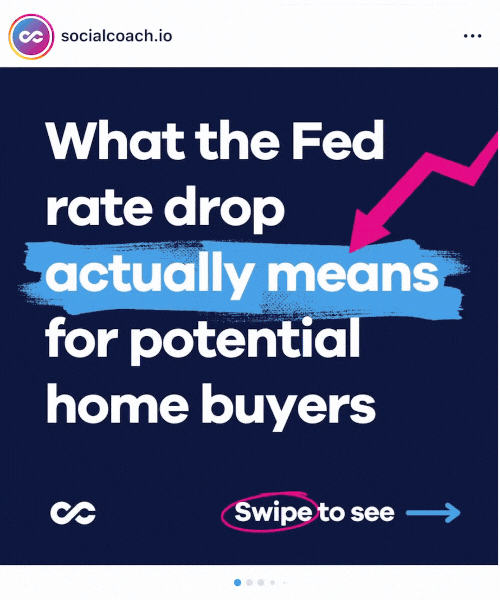
What they are: A series of images or graphics that users can swipe through in one post.
Best for: In-depth content, like breaking down complex topics or showing a progression (e.g., steps in the mortgage process).
.gif)
Example for Loan Officers:
Post Title: How to Get Pre-Approved for a Mortgage in 5 Steps
Slides: Each slide provides a step in the process (e.g., Step 1: Gather Your Financial Documents)
Caption: Swipe through to see what it takes to get pre-approved for a mortgage. What questions do you have about getting pre-approved? Send this to someone who is interested in homeownership to help them get started!
Best Use Cases:
- Perfect for simplifying complex concepts like loan types or the closing process
- Ideal for educational content that requires a step-by-step explanation
- Drives higher engagement, as users are encouraged to swipe through multiple slides
3. Video Posts
What they are: Short vertical videos, ranging from 15 seconds to up to 10 minutes
Ideal length: 30 to 90 seconds
Best for: Explaining educational topics, showing personality, or sharing client success stories
Example for Loan Officers:
Video Title: Explaining Fixed vs. Adjustable-Rate Mortgages in 60 Seconds
Content: A quick video explaining the difference between fixed and adjustable rates with easy-to-understand visuals.
Caption:
Best Use Cases:
- Use videos to explain commonly misunderstood topics, like different mortgage products or the home-buying process
- Short-form videos (15-60 seconds) are great for TikTok, Instagram Reels, or Stories
- Longer videos (over 2 minutes) work well on Facebook or YouTube for deeper dives into complex topics.
4. Stories
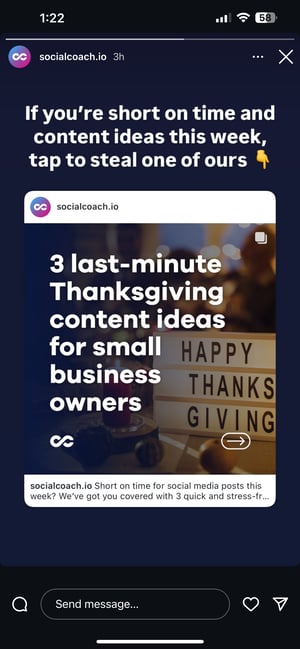
What they are: Temporary posts that disappear after 24 hours and can include images, videos, or polls.
Best for: Flash updates, behind-the-scenes content, and interactive posts.
Available on: Facebook, Instagram, TikTok
Example for Loan Officers:
Story Content: Quick tips or snapshots of your day (e.g., "A day in the life of a loan officer")
Poll Example: "Are you thinking about refinancing your mortgage this year?" with a Yes/No poll
Caption: "Want to learn more about refinancing? Drop your questions in the box!"
Best Use Cases:
- Great for engaging your audience in real-time with quick polls, Q&As, or time-sensitive offers
- Use Stories to give an informal, personal glimpse into your workday or to highlight client successes
- Excellent for driving immediate interaction, like asking for questions or hosting a mini Q&A session
5. Live Streams
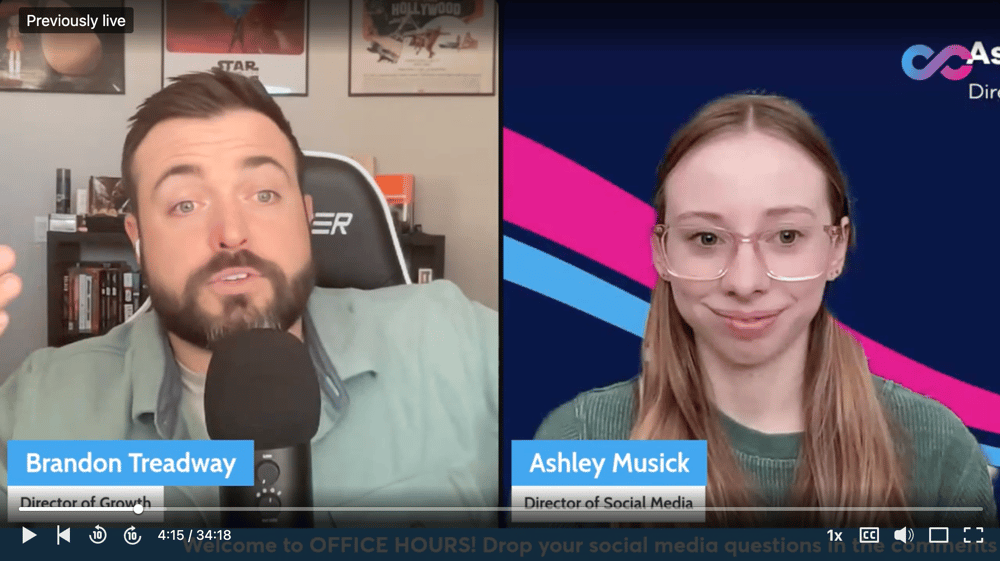
What they are: Real-time video sessions where viewers can watch and interact
Best for: Hosting Q&As, explaining market updates, or interviewing clients/industry experts
Available on: Instagram, Facebook, and TikTok
Example for Loan Officers:
Live Stream Topic: "Understanding Mortgage Rates in Today’s Market"
Content: A live 20-minute session breaking down current interest rates, followed by a Q&A with live comments
Caption: "Join me LIVE today at 2 PM EST to discuss what’s happening with mortgage rates right now."
Best Use Cases:
- Use live streams to offer real-time insights and answer audience questions immediately
- Great for building trust and credibility as you engage directly with your audience
- Works well for Facebook and Instagram
6. Polls & Interactive Posts
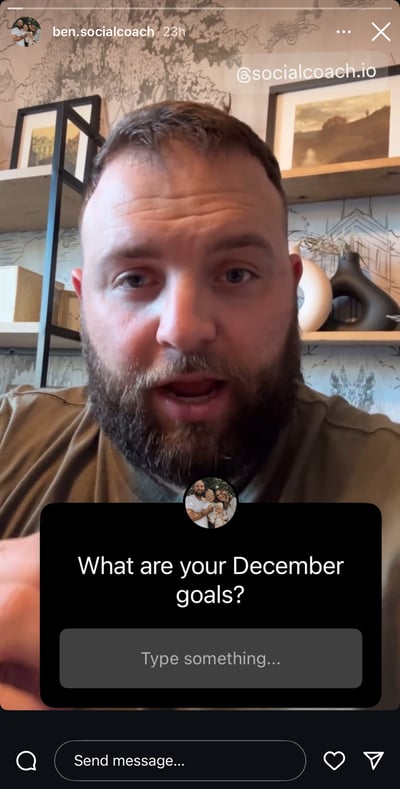
What they are: Posts that include interactive elements, such as polls, quizzes, or questions to encourage audience engagement
Best for: Starting conversations and gathering insights from your audience
Example for Loan Officers:
Poll Question: "What’s the biggest question you have about the home-buying process?"
Options: "Getting pre-approved, Closing costs, Down payments"
Caption: "Let me know! Your answer might be the topic of my next video. #HomebuyingJourney"
Best Use Cases:
- Use polls and interactive posts to gather feedback, learn more about your audience’s pain points, and spark conversations
- Fantastic for Instagram Stories and Facebook posts
- Helps boost engagement and makes your content feel more personal
7. Infographics
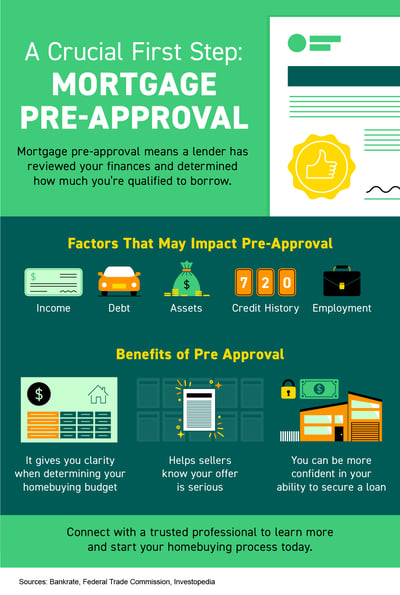
What they are: Visual representations of information, often combining images, text, and statistics in a single graphic
Best for: Sharing data, statistics, and complex information in a visually appealing, easy-to-understand format
Example for Loan Officers:
Infographic Title: "Steps to Closing on Your Home"
Content: A visual that breaks down the steps, from securing financing to signing the final papers.
Caption: "Closing on your dream home can be stressful. Here’s what to expect at each step! #MortgageTips"
Best Use Cases:
- Ideal for simplifying dense topics like loan approval timelines, interest rates, or the loan application process
- Great for LinkedIn, Facebook, and Instagram carousels
- Visually striking and easy for users to share with their own networks

1. Facebook
The Relationship Builder
Recommended Account Type: Business page
Best for: Building community connections, relationship marketing, and local outreach
What to post: Mix personal and professional content to build trust – think client stories, testimonials, community events, FAQs, and live Q&A sessions
Pro Tip: Join Facebook Groups that target your niche market, and consistently offer valuable advice. This will establish you as the go-to expert in your area.

2. Instagram
The Visual Storyteller
Recommended account type: Business or Creator account
Best for: Creating visually appealing, engaging content that educates your audience
What to post: Behind-the-scenes videos, market updates, infographics, educational tips, and Reel under 90 seconds
Pro Tip: Use Reels for brief, engaging content that gets high visibility—Instagram’s algorithm loves short, engaging videos. Check out our complete guide to Instagram Reels here.

3. LinkedIn
The Professional Connector
Recommended Account Type: Personal profile
Best for: Networking with industry professionals, referral partners, and potential high-value clients
What to post: Share industry news with your insights, start discussions by asking questions, celebrate professional milestones, and provide commentary on market trends
Pro Tip: Start engaging in the comments on relevant industry posts. Tagging connections will boost visibility and invite more interaction.
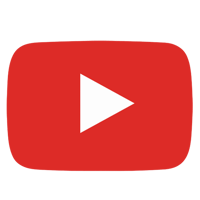
4. YouTube
The Educator
Recommended Account Type: Personal profile
Best for: Educational content that positions you as an expert in the industry
What to post: Tutorials, home-buying guides, financing scenarios, and in-depth discussions on topics like refinancing or market trends
Pro Tip: Optimize your video titles with a mix of attention-grabbing phrases and targeted keywords. For example, use titles like “Don’t Fall for the Free Refinancing Trap” or “Avoid These Pitfalls When Applying for a Mortgage” to boost visibility and engagement
.png?width=200&height=200&name=TikTok%20Logo%20(1).png)
5. TikTok
The Entertainer
Recommended Account Type: Creator account
Best for: Reaching new audiences with short, attention-grabbing content
What to post: Combine education and entertainment—use trending sounds for humorous takes on industry challenges, share quick client success stories, and offer actionable tips.
Pro Tip: Leverage trending audio and hashtags to increase your chances of going viral. Engaging with popular sounds and trends can broaden your audience reach and give your content a bigger boost.
Social Media Success Tips
Consistency is Key
Posting regularly is essential to staying top-of-mind with your audience.
You don’t need to post daily, but establishing a consistent schedule—like 2-3 times per week—helps your audience know what to expect when they follow you.
Consistency also helps with platform algorithms, improving your content’s reach over time. (Check out our content scheduling tips here)
Engage, Don’t Just Broadcast
It’s called social media for a reason.
Make sure to respond to comments, ask questions, and engage with your followers.
It’s about building relationships that make your audience trust and value your guidance, not just pushing out information. (Click here to skip right to our engagement tips below)
Use Keywords
Make your content more discoverable by using relevant keywords in captions, post titles, and video descriptions.
Longer captions often perform better because they give platforms more context to categorize your content.
For hashtags, aim for 3-5 highly relevant ones—think about the specific audiences, locations, or topics you're targeting. (Explore our hashtag strategy guide here)
Test, Learn, and Optimize
Not every post will be a hit, and that’s part of the process.
Track engagement (especially shares and comments) to identify what resonates most with your audience. Use analytics tools to monitor video watch time, shares, and comments so you can adjust your strategy accordingly.
Experiment with new formats, and don’t be afraid to take risks—learning from what doesn’t work is just as valuable as capitalizing on what does.
Stay Authentic
People want to work with someone they trust.
Don’t be afraid to share your personality in your posts—whether it’s a behind-the-scenes look at your day, a personal success story, or a lesson learned from a client experience. Real moments make your brand more relatable and memorable.
Remember: People connect with people, not faceless brands.
1. What Type of Content Works Best for Loan Officers?
Certain content types are more likely to capture attention and drive engagement than others. To get the most out of your social media strategy, aim to provide a mix of Value-Add, Community-Building, and Promotional content.
Here’s how each category can work for you:
Value-Add Content:
Focus on content that offers helpful advice, tips, or hacks that your audience can use in their everyday lives.
This could be homebuying tips, mortgage myths, homeowner hacks, or financial advice that directly adds value without directly pushing a sale. Posts like "5 Homebuyer Mistakes to Avoid" or "How to Save Money on Your Mortgage" can position you as a knowledgeable resource.
- Examples: Educational content about mortgage terms, tips for first-time homebuyers, financial management advice for homeownership.
- Pro Tip: Long-winded posts may lose attention – quick tips or easy-to-digest advice tend to perform better. Use simple tips that can be consumed quickly, but offer actionable takeaways, and consider turning detailed topics into a series of posts to keep the audience coming back for more.
Community-Building Content:
This is the content that shows your human side and helps build relationships with your audience. Authenticity is key—because people want to do business with someone they trust and relate to, not a mortgage or real estate robot.
Share personal stories, local events, or fun trends that reflect your personality and make you more relatable. Posting memes that you find funny, behind-the-scenes moments, or photos of your hobbies or pets can help your audience connect with you on a deeper level.
- Examples: Highlight local community events, fun facts about your team, or showcase a personal passion or hobby outside of work.
- Pro Tip: Show your personality and let your followers see who you are outside of business––and give them opportunities to share their opinions and engage with you through Instagram Story polls, Q&A sessions, and asking them questions directly to boost engagement.
Promotional Content:
After you’ve built a rapport and established yourself as an expert, it’s time to share more promotional content.
These posts can highlight loan programs, special offers, or any content designed to guide potential leads further down the sales funnel. It’s essential that your promotional content still feels relevant and valuable to your audience.
Instead of relying on a direct sales pitch, emphasize the positive outcomes you can help your audience achieve—whether it’s saving money, simplifying the homebuying process, or finding the best financing solution. Focus on how you can solve their problems and make their lives easier, rather than just promoting your services.
- Examples: Highlight specific loan programs, explain how they work, and demonstrate their benefits to potential homebuyers.
- Pro Tip: Keep the tone educational. Instead of just selling, focus on how these products can solve specific problems, achieve specific results, or make homeownership more accessible for your audience. Remember, real-life success stories resonate strongly, so try to share client stories and testimonials that illustrate the benefits of working with you.
2. Frequency of Posting and Content Consistency
Consistency is more important than frequency. You don’t need to post every day, but you do need a reliable schedule that you can maintain long-term.
But perhaps more important than that is the simple fact that the more consistently you post, the better you will get at content creation. You will get more comfortable on camera, you'll find what works and what doesn't, and you'll be able to refine your content to make it better and better.
Here’s a simple breakdown to get you started:
Recommended Posting Frequency: Aim for 2-3 posts per week to start. This is enough to stay visible without overwhelming yourself or your audience.
Create a Content Calendar: Use a content calendar to plan your posts ahead of time. This ensures you have a healthy mix of content and can maintain consistency without last-minute stress. (Looking for an example template? Here’s ours.)
Find Your Optimal Engagement Window: Track which times and days generate the most engagement for your posts, and schedule your content accordingly.
The “best time” to post depends on your audience – but if you’re stuck on where to start, try posting around times when people are likely scrolling on social media, like lunch hours (11 AM - 1 PM) or before and after work (7 AM - 9 AM & 7PM - 9 PM).
3. Mix of Post Formats
Different formats serve different purposes, which is why a well-rounded strategy uses a variety of post types. Here’s how to diversify your content for better engagement:
Video:
Video content is the most engaging format on social media, generating 1200% more shares than text and image posts combined (Vidico). Use short, 60-second clips for quick tips on platforms like Instagram and TikTok, or longer videos (2-5 minutes) on YouTube for deeper educational content. Reels and YouTube Shorts are ideal for fast, engaging snippets.
(Want more video tips? Check out our video guide here.)
Pro Tip: Add captions to all videos—Digiday reports that 75% of video views are with the sound off, which is why captions help improve both accessibility and comprehension rates. Make sure every video starts with an attention-grabbing hook to capture interest in the first few seconds.
Worried that creating video content is too time-consuming or complicated? We’ve made it easy for you.
With SocialCoach+, we give you over 300 ready-to-film scripts and a built-in teleprompter to save you hours of brainstorming and memorizing. But we don't stop there—we also handle the editing, add professional captions, and automatically post to multiple social media platforms for you, making it easy to create pro-level videos in just a few minutes.
See how effortless video content can be with SocialCoach+
Infographics & News Updates:
These are excellent for simplifying complex topics into easy-to-understand visuals. Use infographics to highlight market trends, illustrate interest rate changes, or break down the home-buying process step-by-step. They are highly shareable and perform well on platforms like Instagram, Pinterest, and LinkedIn. Avoid industry jargon, and make sure to explain what the infographic means for your audience in the caption or through a complementary video.
Pro Tip: Keep your design simple and clean. Use your brand colors, and make sure the font is easy to read—even on a mobile screen.
Text Posts:
On platforms like Facebook and LinkedIn, not every post needs to be visual (though posts with a photo or video get 2-3x better engagement on average). Text posts are great for sharing quick tips, asking engaging questions, or sharing a motivational story––though even adding a casual selfie can nearly double your engagement (BuzzSumo).
Pro Tip: Use eye-catching headlines and space out text to make it more readable. Include a clear call-to-action at the end to drive engagement.
Looking for example content ideas to get you started? Check out our blog post of 47 Real Estate Post Ideas (with examples) here.

You’ve likely seen hashtags, but do you know how to use them to your advantage?
Hashtags—like #LoanOfficerLife—are keywords or phrases without spaces, preceded by a hash symbol (#). They help platforms categorize your content and get it in front of the right audience.
Here’s a quick guide to using hashtags strategically:
Why use hashtags?
- Increase reach & engagement: When you use the right hashtags, you’re making it easier for people searching for those topics to find and engage with your content
- Keep your content organized: Use specific hashtags like #CaliforniaLoanPrograms or #FirstTimeBuyer to clarify who you want to reach
How many hashtags should you use?
When it comes to hashtags, quality over quantity is key. Overloading your post with 10+ hashtags can confuse the algorithm, making it harder to categorize your content accurately.
Since algorithms already use the keywords in your caption, hashtags should serve to provide additional context or highlight what you want to emphasize.
- Instagram: Use 3-5 relevant hashtags on each post for best results
- Facebook & LinkedIn: Stick to 1-3 to keep it clean and professional
- TikTok: Go for 3-5 hashtags, mixing trending and niche-specific hashtags
Choosing the right hashtags:
Best practices is to experiment with a mix of well-known hashtags (like #RealEstate) and more niche ones (ex. #FirstTimeHomeBuyer), but it’s important to make sure your hashtags don’t conflict.
Here’s what we mean by that:
Example: If you share a video about buying a home in Denver but throw #GoRockies in your caption for fun, it can confuse the algorithm – is your content about real estate or baseball? The algorithm might push your content to the wrong audience, and if they don’t engage with your video, it can hurt your content’s performance. So choose your hashtags carefully!
Pro tip: Add local hashtags like #OCRealEstate or #CALoanProgram to zero in on your ideal audience––especially when you are sharing region-specific content, or if you are only licensed for certain areas.
Do Your Research: Check out what’s trending in your industry, and experiment with hashtags that align with your brand. If you need inspiration, look at popular videos in your niche and see what hashtags those creators are having success with.
Bonus Tip: Does Capitalization Matter?
The Short Answer? Not really. Capitalizing your hashtags can make them easier to read (#SanFranciscoRealEstate vs #sanfranciscorealestate) and is more accessible for those using screen readers.
But it won't affect your post’s visibility—so go with what looks and feels right to you!
1. Why Responding to Comments Is So Good For Engagement
Did you know that responding to comments on your posts actually improves your post performance?
For instance, if you receive 2 comments and respond to both, you’ve just turned those 2 interactions into 4. This signals to the algorithm that your post is sparking conversation, helping it reach more people and boosting its performance.
Pro Tip: Using relevant keywords in your comments can also help your content reach the right people – so instead of just responding with a quick “thanks!”, try to keep the conversation going and incorporate more keywords.
Example: “Glad you found these credit tips helpful! What other questions do you have about home financing?”
The more you meaningfully engage with your audience, the more likely they are to stick around and interact with future posts.
2. Active vs. Reactive Engagement
Engagement isn’t just about reacting when someone comments on your posts—it’s also about being proactive and reaching out to new people. Here's how:
Step 1: Reactively Engage
Always reply to comments and messages on your posts––this is especially within the first 24 hours to help your content’s reach. When you take the time to respond, you’re showing that you appreciate your audience’s input and aren’t just “posting and ghosting”.
Step 2: Actively Reach Out
Take a few minutes each day to engage with new accounts. Direct Messages (DMs) are a great way to start conversations that go beyond just liking a post.
But make sure your DMs aren’t just “Hey!” or “Great post!”—make them personal and thoughtful. For example, sending a congratulatory message when someone shares a life milestone or achievement, or even just writing a quick reaction to a meme or video they might have shared can open the door for conversation.
Sending personalized DMs or messages reacting to the content your followers share keeps you top of mind, builds connection, and can help turn casual followers into loyal fans.
The 10-10-10 Rule for Engagement
Here’s an easy rule you can use to stay engaged and build meaningful connections on a consistent basis:
Spend 10 minutes every day leaving 10 thoughtful comments on posts from accounts you admire or those in your industry, and send 10 story reactions or DMs that go beyond just emojis.
Obviously, the more personal you can be, the better, but here are some ideas to get you started:
For clients:
- “I’m so glad you shared this––it gave me a good laugh!”
- “Congrats on [milestone]––so awesome to see you thriving. What’s your next move?”
For referral partners:
- “I just saw the [post/article/video] you shared––what’s your take on [topic]?”
- “I loved your recent post on [subject]. I’ve been working on something similar, and I’d love to swap tips—would you be open to chatting?”
- “Your post about [specific topic] got me thinking and now I’m curious––how do you handle [related challenge] in your day-to-day?”
3. Encourage More Engagement with Call-to-Actions
Want to see more engagement from your audience? Help them know exactly how to interact by using clear and compelling call-to-actions (CTAs).
Whether you're prompting them to share their thoughts in the comments, encouraging them to follow you for more valuable content, or reminding them to share the video with others, a well-crafted CTA makes it easier for your audience to take action.
Examples of CTAs for boosting engagement:
- What’s your biggest challenge with [topic]? Drop a comment below, and let’s chat about it—I’d love to help you find a solution.
- Know someone who could use these tips? Send them this video!
- If you want more advice on [relevant topic], make sure to hit that follow button so you don’t miss out on future tips!
- Not sure if you’re eligible for this loan program? Send me a DM, and I’ll help you find out!
Pro Tip: The more specific you are with your CTA, the more likely people are to take action. Don’t just say “Comment below”—tell them exactly what you want to hear from them.

To truly understand how your social media efforts are paying off, you need to take a look at your analytics. Knowing what’s working and what’s not will help you adjust your strategy for even better results.
Here’s how to make sense of the numbers and use them to your advantage:
1. Understanding Analytics: What Do the Numbers Mean?
Analytics are more than just numbers—they're insights into how your audience is interacting with your content. Here are a few key metrics to keep an eye on:
Likes: A sign that people appreciate your content, but they’re just the tip of the iceberg. While likes are great, they don’t show deeper engagement.
Views: For videos and other visual content, views are a great indicator of interest. If people are watching your content through to the end, you’re clearly hitting the mark.
Comments: These are gold because they show real interaction. Pay attention to what people are saying and how often they’re commenting. High comment numbers often correlate with more meaningful engagement.
Shares: When someone shares your post, it means they found it valuable enough to pass it along to their network. This is a major indicator that your content is resonating, and is the metric that most social media platforms prioritize most highly when deciding what content to boost to new audiences.
Click-throughs: If you have links in your bio, tracking profile visits or how many clicks your links get tells you how effective your CTA is.
2. Setting Goals and Incorporating Them Into Your Content Strategy
Setting clear goals isn’t just about tracking your metrics—it’s about using them as a roadmap for what you create.
Start by asking yourself:
- What do I want to achieve? Are you aiming for more engagement, more followers, more shares, or ultimately more leads?
- How will I know if I’ve succeeded? Define your success benchmarks, like achieving a certain number of views, comments, or shares per post, or increasing followers or link clicks by a certain percentage.
Here’s how to turn those numbers into actionable steps in your content strategy:
Growth Goals: "I want to gain [X] more followers in the next 6 months."
To achieve this, focus on strategies that encourage new followers to discover and follow you:
- Create shareable content: Posts that get shared are a great way to increase visibility. Share valuable tips, relatable content, or trending topics in your industry that will make people want to tag their friends or share to their Stories.
- Collaborate: Partnering with other industry professionals or businesses that align with your brand is an effective way to tap into their follower base. Consider co-hosting a webinar or creating a video together (don’t forget to add each other as a collaborator on Instagram, or for other platforms, to tag them in the post).
- Consistency is key: Post consistently, ideally once a day or several times a week, depending on your industry. The more you post, the more likely you are to appear in new feeds and attract new followers.
Engagement Goals: "I want to increase my post engagement rate (comments, shares)."
When it comes to engagement, you need to go beyond just posting and encourage active interactions:
- Ask questions in your captions: Prompt comments with open-ended questions that encourage your audience to share their experiences.
- Example: “What’s the one thing you wish you knew before buying your first home? Drop your thoughts below!”
- Use polls and quizzes: Instagram and Facebook Stories are great places to encourage quick engagement with polls and quizzes to invite responses in a fun way.
- Reply to comments: Respond thoughtfully to comments and try to create meaningful interactions that could turn into a deeper conversation in your DMs later.
- Engage with your followers' content: Spend time engaging with your followers' posts by leaving thoughtful comments. This builds goodwill and encourages reciprocal engagement on your own posts.
Conversion Goals: "I want to generate more consultations from social media."
For conversions, your content needs to directly encourage people to take action, such as booking a consultation or clicking on your link:
- Educate through content: Share valuable, educational content that speaks directly to the pain points your target audience faces. If they feel like they’re gaining useful insights from your posts, they’ll be more likely to reach out for a consultation.
- Optimize your CTA: Make sure each piece of content has a clear, actionable CTA, such as “Click the link in my bio to book your consultation today!” or “Want to learn more? DM me, and let’s talk about your home loan options.”
- Create urgency: Offering limited-time resources or emphasizing the urgency of a topic (e.g., “Rates are changing soon—schedule your consultation today!”) can encourage people to take immediate action.
- Lead magnets: Create free resources (checklists, guides, etc.) and use them as lead magnets to encourage people to provide their contact information or book a time to chat. For example, “Download my free guide on first-time homebuyer programs, and let’s set up a quick chat to review your options.”
3. Adjusting Strategy Based on Performance
The most important part of analyzing your social media ROI is using the insights to refine your strategy.
Analyze your content: Review which types of posts are driving the most engagement (e.g., questions, tips, client testimonials) and double down on them. If educational posts generate more comments or shares, aim to create more of those.
- If your posts are getting lots of likes but minimal comments, it might indicate that your content is visually appealing but not sparking deeper conversations. Try to post more interactive questions or prompts to encourage discussion.
- If a particular type of post is getting more shares, double down on that content type. For example, if you notice videos are getting shared more than static posts, start creating more video content.
- Watch time can have a big impact on your video views, reach, and engagement––if you have low views or reach, the first thing you should look at is your watch time. If the average watch time is only a few seconds, it’s likely that you need to work on creating stronger, more attention-grabbing hooks to keep people watching longer.
- On the other hand, if you’re getting lots of views but minimal click-throughs to your consultation link, consider revising your CTA to make it more compelling.
Adjust your posting times: If you’re not getting as many interactions as expected, try posting at different times of day to see when your audience is most active.
Experiment with your CTAs: Try out different calls-to-action to see which ones drive the most conversions. A/B test wording, placement, and style—one small tweak could lead to a big difference in results.
Evaluate audience feedback: If you’re getting lots of questions or requests for more content on a particular topic, make sure to create more of that content in a timely manner to take advantage of that interest and build momentum.
Analyzing your metrics regularly will keep you on track, helping you optimize your approach and make smarter decisions moving forward.
Final Tip: Social media success isn’t just about posting content—it’s about learning, adapting, and continuously improving. Keep an eye on the data, set meaningful goals, and be ready to adjust your strategy to create even more impact.
Bonus: Quick Glossary of Common Social Media Terms
- Algorithm: The system that determines what content gets shown to users based on their behavior and preferences. Most social media platforms have their own algorithm or formula for how they distribute content to users.
- Call-to-Action (CTA): A prompt that encourages your audience to take a specific action, such as commenting, sharing, clicking a link, or scheduling a consultation.
- Carousel Post: A post with multiple images or videos that users can swipe through, often used to share tips, before-and-after transformations, or multiple products/services in one post.
- Click-Through Rate (CTR): The percentage of people who click on a link in your post or ad compared to the total number of people who see it.
- Conversion Rate: The percentage of people who take a desired action, such as booking a consultation or making a purchase, after interacting with your content.
- DM (Direct Message): A private message sent between users on social media platforms, often used for one-on-one conversations, relationship building, and inquiries.
- Engagement: Any action that a user takes on your content, like comments, likes, shares, or clicks.
- Engagement Rate: A metric that shows the level of interaction your content receives compared to the number of followers you have. It helps measure the effectiveness of your content in driving engagement.
- Feed: The stream of posts that users see when they log into a social platform, based on the algorithm that social media platform uses and who they follow.
- Hashtags: Words or phrases preceded by a “#” symbol that help categorize content and make it discoverable.
- Impressions: The total number of times your content has been shown to users, regardless of whether they interacted with it.
- Organic: Refers to content that is shared, seen, or engaged with naturally, without paid promotion or advertising. Organic content can include posts, stories, or videos that appear on your feed and are not boosted by ad spend.
- Organic Reach: The number of people who see your content without any paid promotion. Organic reach occurs when your followers, their followers, or other users interact with your content (likes, comments, shares), and the platform’s algorithm displays it to a broader audience based on that engagement, as opposed to paid content or media that is artificially promoted because someone has sponsored or paid for it.
- Reach: The total number of unique users who see your content.
- SEO (Search Engine Optimization): The process of optimizing your content so it ranks higher in search engine results, helping people find you more easily.
- Story: A temporary post (typically lasting 24 hours) on platforms like Instagram and Facebook, often used for quick, casual updates, promotions, or behind-the-scenes content.
- User-Generated Content (UGC): Content created by your audience, typically shared by your followers or customers, which you can repost to build social proof and increase engagement.
-01-1.png?width=1200&height=238&name=Logo%20-%20Social%20(V001)-01-1.png)





